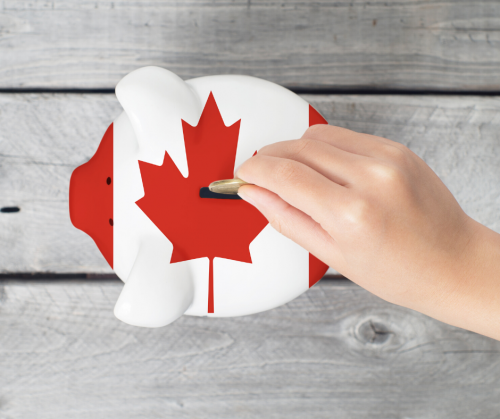Household Income Over $90,000: Taxes 43% , Basic Necessities 36%

Evelyn Jacks & Beth Graddon
In 2019, the average Canadian family spent 42.6% of their household income on taxes according to a new study by the Frasier Institute. Yet, they spent only 36.2% on the basic necessities of life, including housing, food and clothing. The issue for tax and financial professionals is: what can be done to tip the scales in favor of funding basic necessities now, while preparing for a future that could include taxes, inflation, and unemployment? Six strategies appear below.
Taxes have in fact have increased by 2,226% since 1961, according to the Fraser Institute survey. This is a key reason why tax-efficient income and wealth planning is critical as part of the overall strategy to get Canadians back on their financial feet post-pandemic.
Specifically, the Fraser Institute survey shows that the average Canadian family, including both families and unattached individuals, earned cash income of $91,535 and paid total taxes equaling $38,963. In 1961, the average Canadian family spent only 33.5% on taxes and 56.6% on basic necessities.
For 2019, the breakdown was as follows:
|
Taxes
|
$$
|
As % of Total Taxes
|
|
Income Taxes
|
$12,507
|
31.1%
|
|
Payroll & Health Taxes
|
$7,619
|
19.6%
|
|
Sales Taxes
|
$5,668
|
14.5%
|
|
Property Taxes
|
$4,236
|
10.9%
|
|
Profit Tax
|
$4,249
|
10.9%
|
|
Liquor, Tobacco, Amusement & Other Excise Taxes
|
$1,808
|
4.6%
|
|
Fuel, Motor Vehicle License & Carbon Taxes
|
$1,136
|
2.9%
|
|
Other Taxes
|
$1,061
|
2.7%
|
|
Natural Resource Taxes
|
$363
|
0.9%
|
|
Import Duties
|
$315
|
0.8%
|
|
|
|
|
|
Total Taxes
|
$38,963
|
|
|
Total Cash Income
|
$91,535
|
|
|
Taxes as a % of Cash Income
|
42.6%
|
|
Source: Fraser Institute’s Canadian Tax Simulator, 2020
And here’s how income, and the total tax bill has changed over the past 10 years compared to the 1961 base year.
|
Year
|
Average Cash Income ($)
|
Tax Bill ($)
|
Increase in Tax Bill Over the Base Year (%)
|
|
1961
|
$5,000
|
$1,675
|
|
|
2010
|
$73,993
|
$31,109
|
1,757%
|
|
2012
|
$78,496
|
$33,469
|
1,898%
|
|
2014
|
$82,550
|
$35,271
|
2,006%
|
|
2016
|
$83,842
|
$36,107
|
2,056%
|
|
2018
|
$88,548
|
$38,014
|
2,169%
|
|
2019
|
$91,535
|
$38,963
|
2,226%
|
Tax decreases are expected in the 2020-2021 year, however. According to the federal government’s recent economic snapshot released in July, there is no existing plan to increase income tax overall, and in fact, income tax revenues are expected to decline to $146.3 billion in 2020-21, or 14.4%.
There are two primary reasons for this, according to government documents: labour market impacts from layoffs, work absences and fewer hours worked, particularly in Canada’s service sector, which have resulted in lower taxable incomes from labor outputs. Investment incomes have also declined due to lower projected interest rates, capital gains and dividend payments.
The Finance Department is also expecting a negative impact on Goods and Services Tax (GST) revenues, which are forecast to fall to $30.9 billion in 2020-21, or 20.4% as a result of the temporary shutdown of large portions of the retail sector. Another factor is the enhanced GST credit which was sent out this past spring.
Finally, corporate tax revenues are expected to face a similar fate with a projected revenue decrease to the government of $11.0 billion, or 22.3%. This is largely due to lower corporate profits  and general economic weakness due to the COVID-19 quarantine measures.
and general economic weakness due to the COVID-19 quarantine measures.
But these temporary measures have ended and as work life gets back to normal with the reopening of the economy, so will tax collections and budget balancing endeavors.
So, what can be done by average Canadians to tip the after-tax spend back to funding more food, clothing and shelter costs, rather than taxes?
Solutions that tax, bookkeeping and financial advisors can discuss proactively with concerned clients begin with one simple strategy: keeping more of the gross dollars you earned or received, including pandemic provisions. Year-end tax planning activities should focus on:
- More proactive RRSP planning for those who are age eligible with RRSP contribution room, to keep more taxable CERB payments, and manage the size of refundable tax credits next year
- Prior year tax filing reviews to recover missed refunds from errors or omissions
- Income splitting opportunities within the family
- More deliberate planning of equal asset acquisition,ownership and transfer, all within the allowable parameters of the Attribution and TOSI rules, to create balanced individual and net worth as a defence against wealth erosion so that future basics can be funded with tax and inflation-protected wealth
- Generous charitable donations before year end to share with those less fortunate
- Full and complete medical expense claims in a challenging pandemic year
These issues will be discussed in more detail at the CE Summit on September 30.
Additional educational resources: For more information on pandemic benefit program updates, extended filing deadlines and their financial fallout, including the complex auditing process that still lies ahead and the impact on taxation, attend the September 30 Virtual CE Summit. Register by September 15 for early tuition offers.